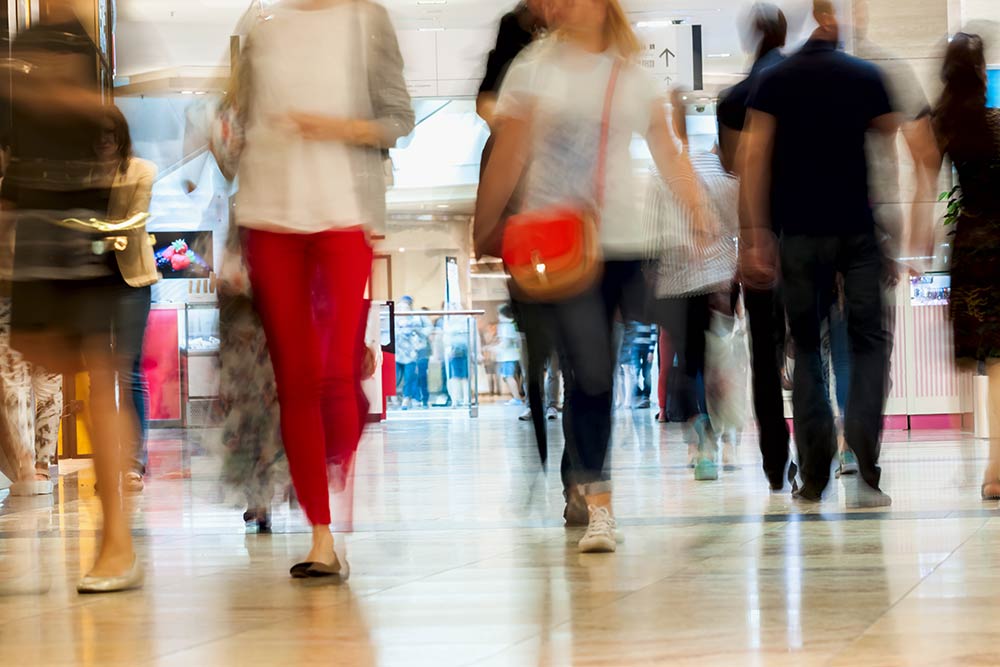How security can improve the customer experience?

Security might be the retailer’s concern, but when it comes down to the bottom line, better security benefits retailers and consumers alike.
Done well, it allows customers a seamless experience where they can freely interact with merchandise and experience the products they seek to buy. Implemented poorly, and a retailer’s security protocol can be intimidating, off-putting and simply ineffective.
So as technology allows retailers greater flexibility in how and where they implement their in-store security, here are three ways a security can improve the consumer experience.
The look
Years of research has gone into store layout and its impact on customers; how to get people to walk through the doors, engage with an item and ultimately purchase. As bricks and mortar stores increasingly compete with their online counterparts, never before has a welcoming shop front that engages a customer been more important.
Among the security items offering innovative solutions are concealed systems that are integrated into a store’s interior design. Using sensors built into a store’s doorway, concealed systems offer retailers a clutter-free entrance way to invite their clientele in. More and more stores are moving towards this trend with around 30% using concealed systems, although implementation can be costly compared to traditional pedestal options.
Addressing the aesthetic issue in a more affordable way are products like ceiling mounted RFID tag readers. Positioned overhead, they monitor stock, using sophisticated antenna to decipher which direction a tag is moving and whether it’s really leaving the store.
The weigh up for retailers is whether they want their security systems to act as a visual deterrent or believe the clean lines and welcoming appeal of an open shop front is the priority.
The feel
The greatest attribute a bricks and mortar stores boasts is its ability for customers to physically engage with merchandise; to touch it, see it, feel it in action.
For retailers this presents the challenge of maintaining stock security while allowing the customer time and space to experience a product. RFID tags embedded in products have gone a long way to addressing this issue, but high-end merchandise like electronics still present unique difficulties.
A retailer can approach this by anchoring their electronics to displays or by keeping them behind glass cabinets, but either way stock should be easily and quickly accessible for customers and sales associates alike.
Items like the Invue IR Key Ecosystem allow retail associates access to everything from anchored electronics to display cabinets with one simple key that automatically resets and re-codes after 12 hours. This enables them to get on with the job of demonstrating products rather than endlessly fumbling for the right key to the right cabinet.
The experience
The new age of retail is all about the consumer experience and this comes down what a retailer knows about the habits of their clientele, and how they can better cater to those needs.
Here, security can play a vital role in furnishing the retailer with information that improves customer interactions.
The top end security systems will not only help prevent stock loss but provide a retailer with valuable data about their consumer habits and inventory. Items like RFID tags have the capability of counting stock and automatically reordering. This ensures the item a consumer seeks is in stock, reducing customer walkouts and ensuring a positive encounter.
RFID tags interlinked with technology like smart mirrors and virtual reality also enable retailers to provide a unique in-store experience. This smart store capability means a customer can explore how they might look in a different shade, whether the item they seek is in stock in a larger size, or how that couch might look in their lounge room.
Meanwhile even fine details such as consumer traffic can be easily captured through comprehensive systems like Vitag Analytics, with data about hourly or daily traffic relayed to a simple app on a mobile phone. This allows retailers to discover more about their consumer’s behaviour and provide adequate staffing levels to suit.
The final word
While retail security has traditionally been about risk mitigation, it’s no longer just about alarms and stock loss minimisation.
New age technology enables retailers to better cater to their valued customer’s needs by honing their services, tailoring their staffing and providing an experience that can surpass anything available on the internet.